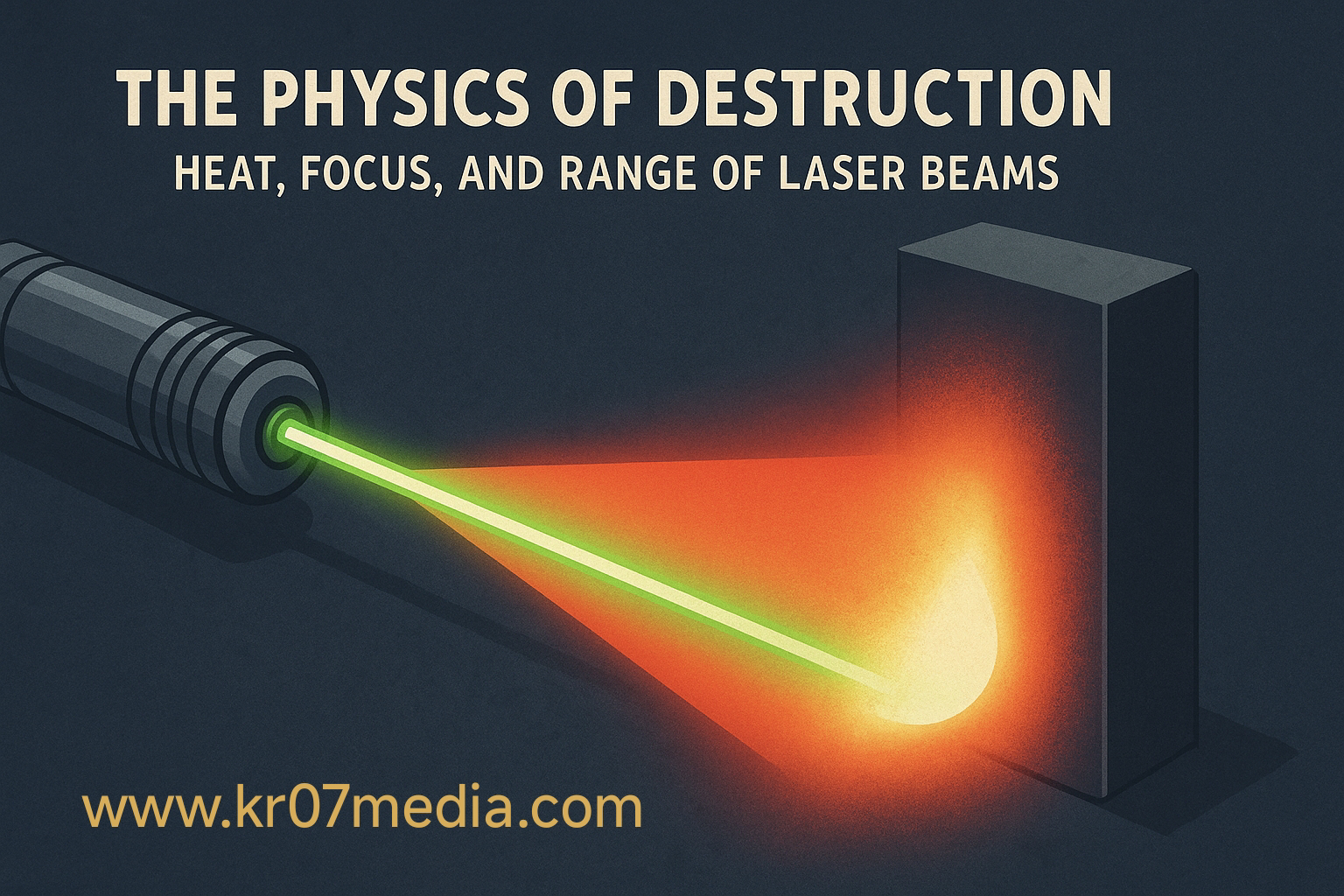The Physics of Destruction: Heat, Focus, and Range of Laser Beams
Laser weapons, once confined to science fiction, are rapidly becoming a potent reality in the fields of defense, medicine, and industrial applications. At the heart of their effectiveness lies a deep interplay of physics — particularly involving heat generation, beam focusing, and range dynamics. Understanding these three key principles offers insight into how lasers can destroy, cut, or disable targets with precision and efficiency.
1. What is a Laser?
A laser (Light Amplification by Stimulated Emission of Radiation) is a device that emits light through a process of optical amplification. Unlike ordinary light sources, a laser produces a coherent, monochromatic, and highly directional beam of light. These properties make lasers ideal for focusing immense amounts of energy into a small area.
2. Heat: The Weaponized Energy
The destructive capability of a laser depends largely on its ability to generate and transfer heat.
Thermal Energy Transfer:
When a laser beam strikes a target, the energy is absorbed and converted into heat. This can cause materials to melt, burn, or vaporize depending on their composition.
Power Levels:
The thermal effect increases with the power of the laser, measured in watts. For instance:
Industrial lasers (1–10 kW) can cut metals.
Military lasers (>50 kW) can burn through drone shells, missiles, or vehicle surfaces.
Material Response:
Metals, plastics, and composites absorb laser energy differently. Dark, matte surfaces absorb more heat than shiny or reflective ones.
3. Focus: Precision Through Beam Control
Focusing a laser beam determines how energy is concentrated over distance and time.
Beam Divergence:
A laser beam ideally travels in a straight line with minimal spreading. Low divergence means higher precision at longer distances.
Optical Lenses and Mirrors:
By using optics, a laser beam can be focused to a tiny spot, increasing energy density. The smaller the focus point, the more intense the heat becomes at that location.
Pulse vs. Continuous Wave:
Pulsed lasers deliver energy in short bursts, useful for drilling or ablating materials.
Continuous wave lasers emit a steady beam, better for sustained heating and cutting.
4. Range: How Far Can Lasers Destroy?
The effective range of a laser depends on atmospheric conditions, beam divergence, and power output.
Atmospheric Effects:
Water vapor, dust, smoke, and air turbulence can scatter or absorb laser energy.
Adaptive optics are used in advanced laser systems to compensate for these distortions.
Range vs. Damage Tradeoff:
As the beam travels, even minimal divergence causes the spot size to grow.
This reduces energy density, limiting the destructive effect unless compensated by increasing power or using focusing mechanisms.
Tactical Use Cases:
Short-range defense:
Lasers can neutralize drones, IEDs, or mortar shells within a few kilometers.
Long-range systems:
Strategic lasers on satellites or high-altitude aircraft must overcome significant beam degradation and energy requirements.
5. Applications of Laser Destruction
Military:
Directed Energy Weapons (DEWs) aim to destroy or disable targets without traditional explosives.
Industrial:
Laser cutting and welding use heat and focus to manipulate tough materials.
Medical:
Lasers are used in surgeries to remove tissue precisely with minimal collateral damage.
6. Limitations and Challenges
Despite their promise, laser weapons face several limitations:
Power Supply:
High-energy lasers require robust, compact energy sources.
Cooling Systems:
Continuous laser operation produces heat that must be dissipated.
Weather Dependency:
Fog, rain, and dust can severely impair performance.
Legal and Ethical Issues:
The use of blinding lasers in warfare is restricted under international law.
7. The Future of Laser Destruction Technology
Research is pushing boundaries in several directions:
Fiber Lasers and Solid-State Lasers:
These offer higher efficiency and lower maintenance than gas lasers.
Combining Beams:
"Beam combining" techniques merge multiple low-power lasers into a single, high-power output.
AI-Enhanced Targeting:
Smart tracking and adaptive optics allow laser weapons to auto-target and maintain beam lock even on fast-moving threats.
Conclusion
The physics behind laser beam destruction involves a rich combination of thermal dynamics, optical precision, and range optimization. As laser technology evolves, it’s not just about burning holes or cutting materials — it’s about harnessing light with surgical accuracy and strategic force. From defending skies to transforming surgery, lasers are proving that in the battle between matter and energy, focused light may be one of the most powerful tools yet.



